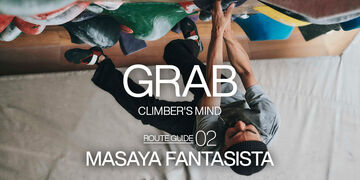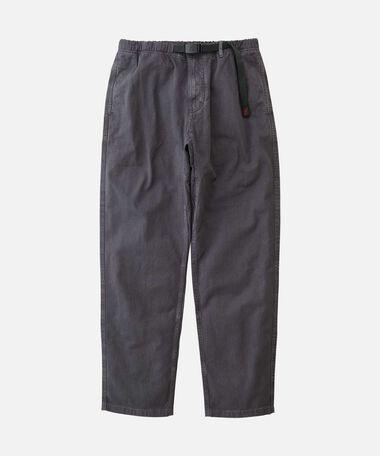Gramicci is now become a part of fashion in everyday life, but its roots are unmistakably in climbing. That's because the brand originated in the climbing pants of legendary rock climber Mike Graham, who was dubbed the "Stone Master" in the 1970s. In this series of articles, we will explore the mentality and lifestyle of climbers who have been captivated by climbing. The signpost that traces the origin of Gramicci once again contains the essence of surviving the present.
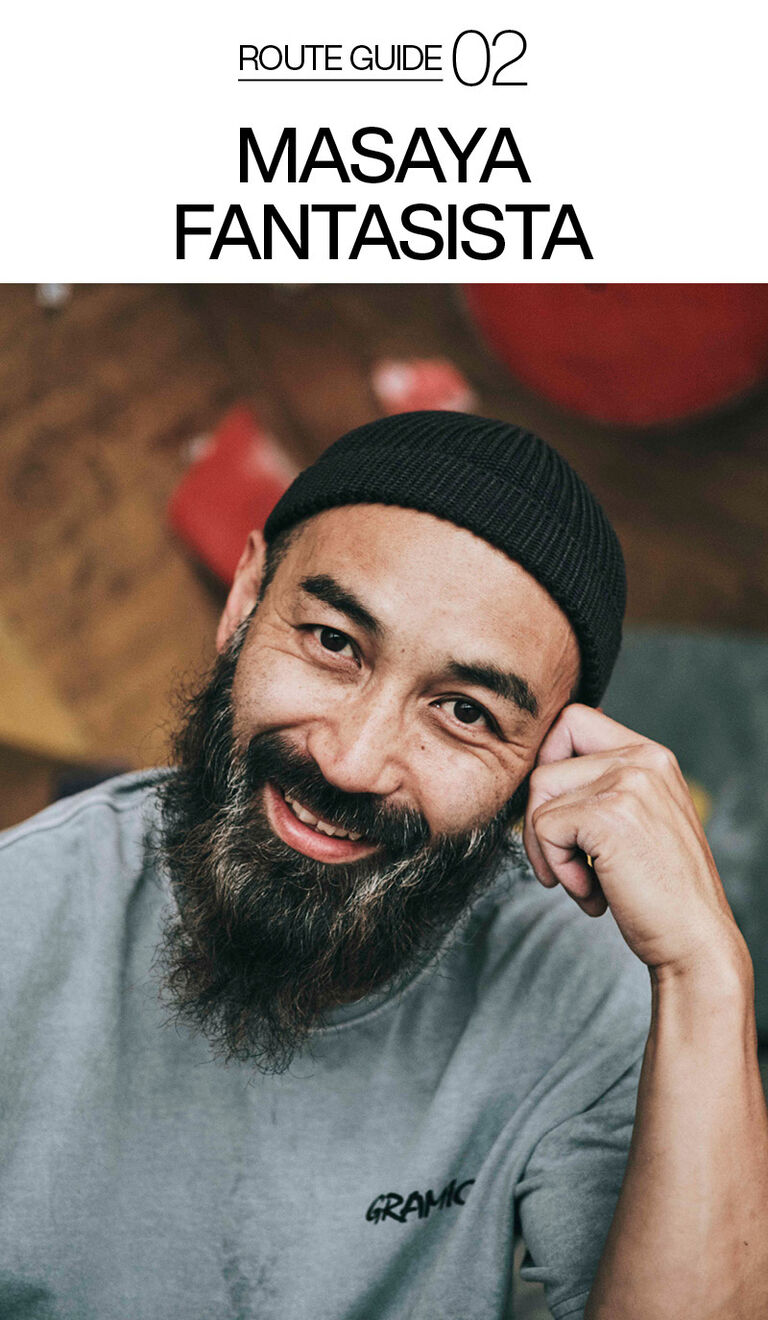

NAME
マサヤ・ファンタジスタ
TITLE
JAZZY SPORT Captain
AREA
THE STONE SESSION TOKYO
PROFILE
Born in 1977 and raised in Yokosuka, Kanagawa Prefecture, he was introduced to music through the piano, which he began playing as a child. Later, he immersed himself in jazz under the influence of his parents. In 2001, he founded "JAZZY SPORT," a "women-friendly hardcore group that loves music and sports." In addition to promoting the mountain sports scene through music events, he also launched "JAZZY DOG LIFE" to support the lives of rescue dogs.
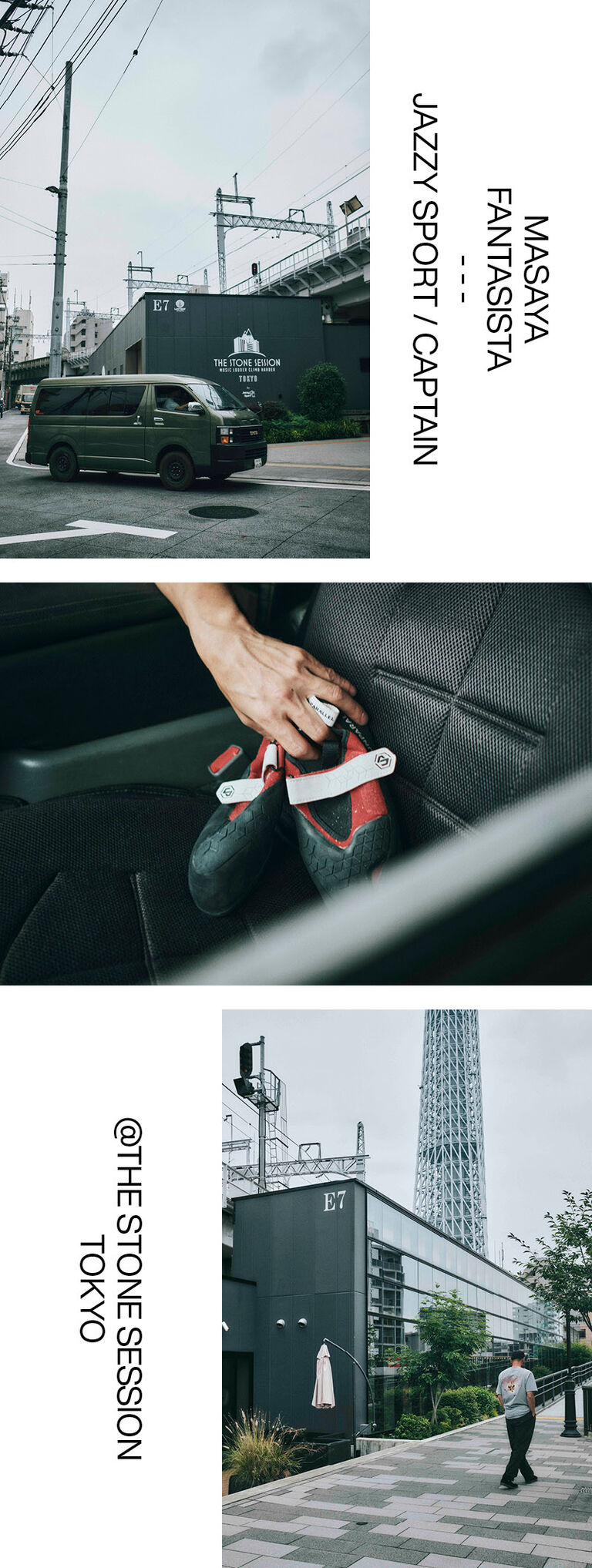
MASAYA FANTASISTA arrived at the bouldering gym "THE STONE SESSION TOKYO" (hereinafter referred to as TSS) in a Hiace from her base in Nagano. Even from the other side of the car, a gentle but powerful aura is exuded. By the way, the only thing he had is climbing shoes placed in the passenger seat. At TSS, we asked Masaya about his current location, from the relationship between climbing and music to his current activities as a rescue dog.
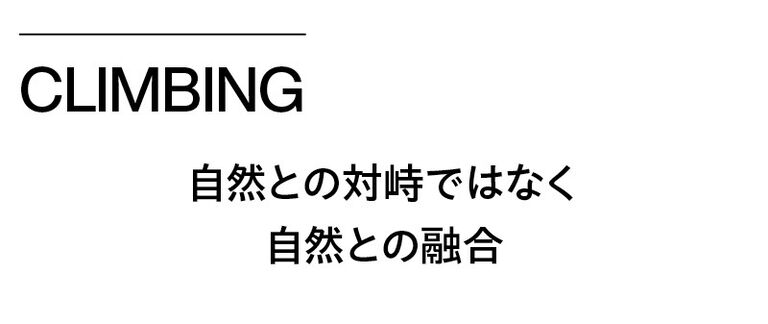
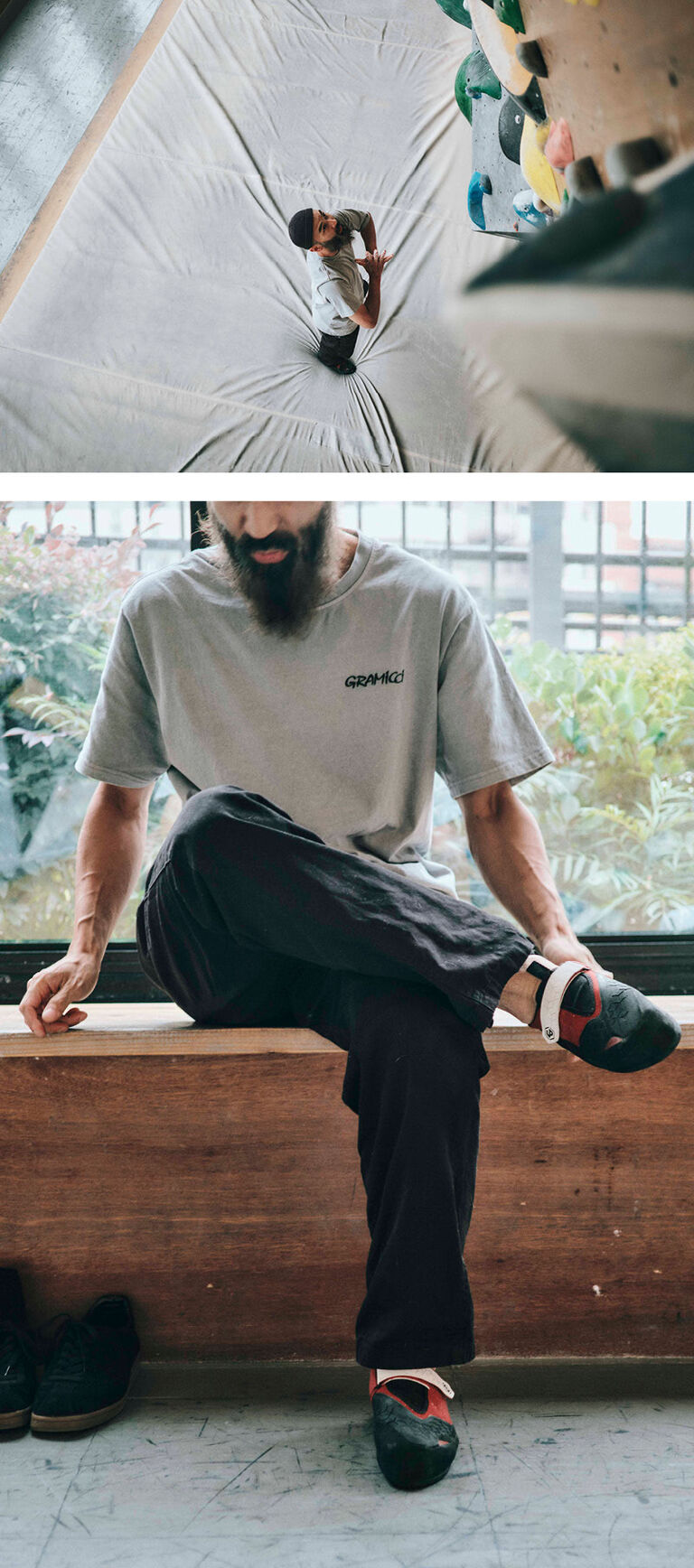
―――How did you get into climbing?
In Yokosuka, where I was born and raised, there is Mt. Takatori, which is famous as a climbing practice slope. At that time, it was the most accessible climbing area from the Tokyo metropolitan region, and I often played in crowded places filled with many climbers. Additionally, I have been skiing since I was little, and eventually, I started skiing in the mountains. In winter, when skiing in the mountains, I often ski in the streams, and in summer, I go to inspect and climb those streams. Climbing skills are indispensable in this context, so I naturally encountered climbing. In addition to bouldering, I also tackle variation routes that require multi-pitch, rappelling, and rope work, and I believe that climbing is very much a part of mountain sports.
Climbing is both a skill and a form of training and play that you need to ensure your own safety.
―――When did you become involved in climbing and music as a member of JAZZY SPORT?
We aimed to create a facility that would be positive for the future of local children. Babies crawl at first, and then try to climb more and more by holding on to their feet, right? It's like a human instinct, and I think climbing is an extension of that.
That's why there's a sandbox here. First, he crawls and climbs the children's wall, and when he sees an adult climbing next to him, he longs for it. And I think it would be great if there were children who would become stronger and stronger and challenge the world.
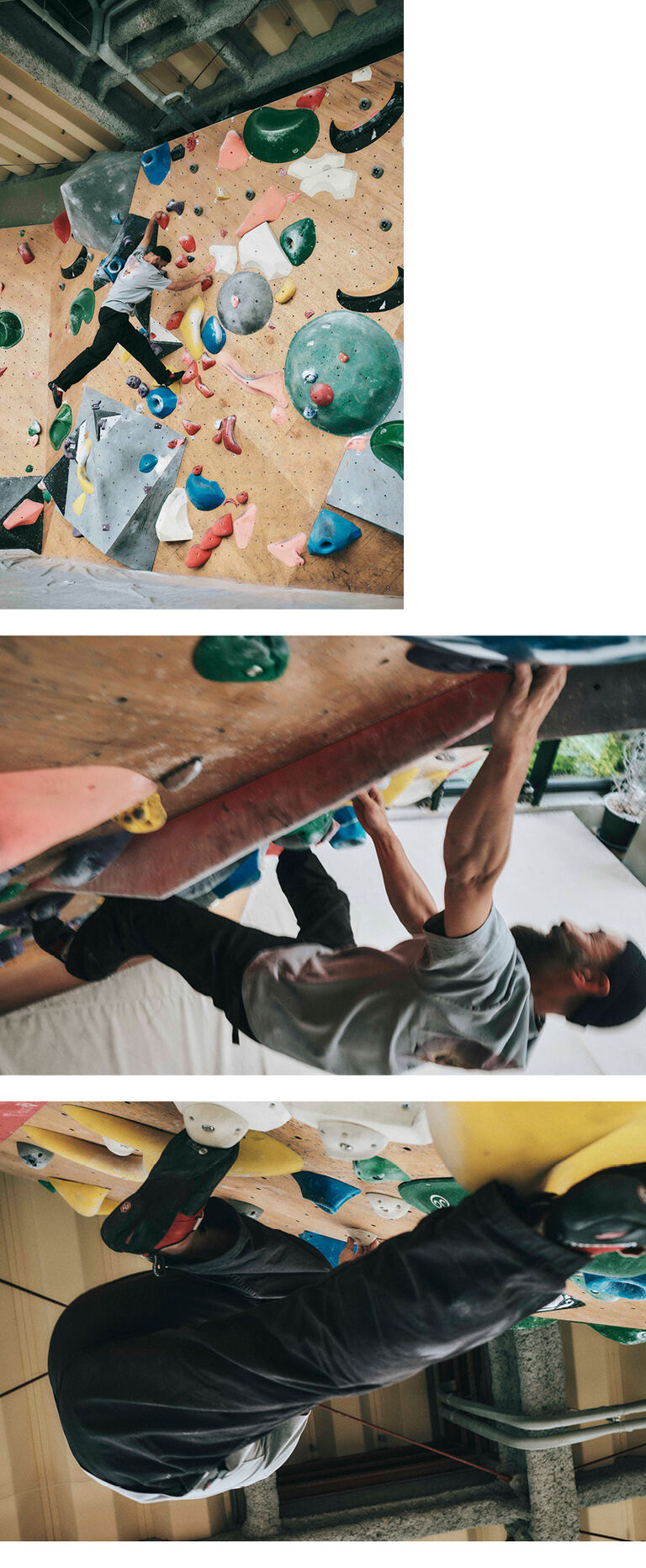
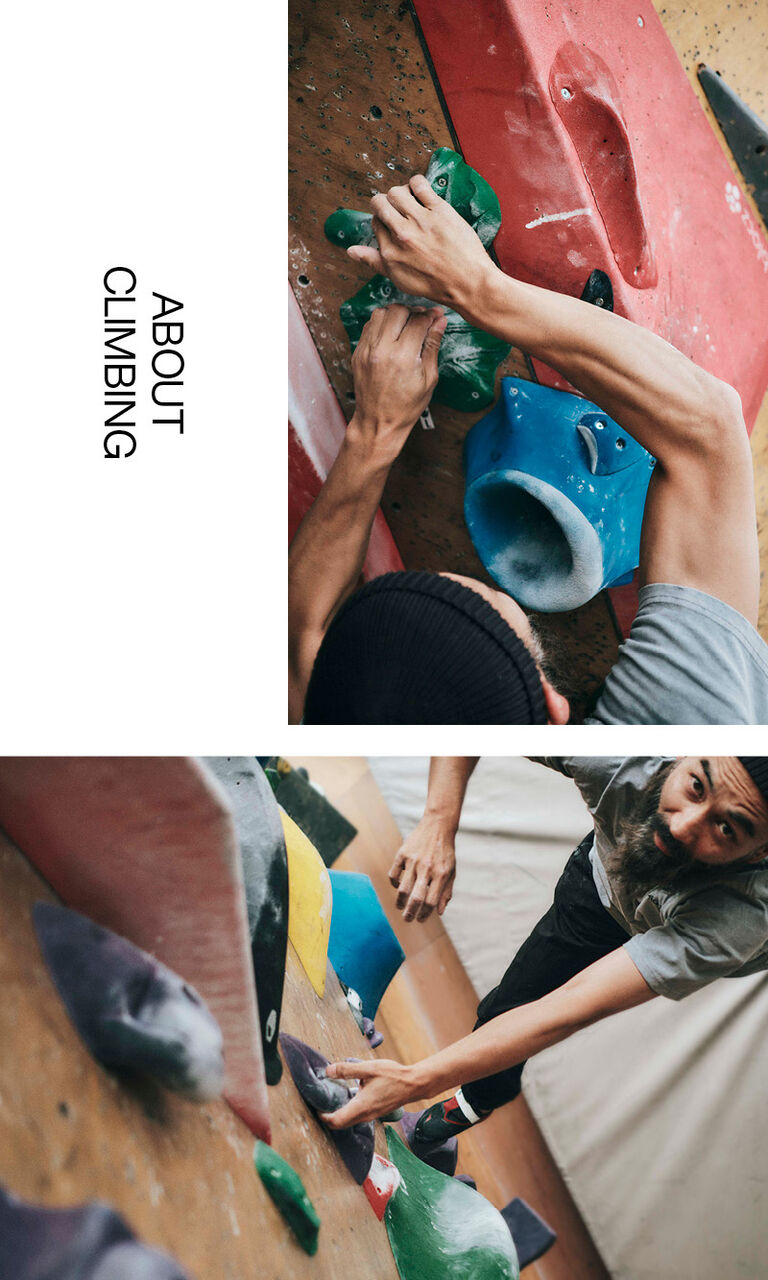
―――What do you keep in mind when selecting music?
We simply play the music we like. However, it’s based on something that feels uplifting, energetic, stoic, or floating—it's like, "I’m rooting for you!" In fact, the players may be so focused that they don’t really hear it, or they might be thinking, "Please play something easier to understand!" (laughs).
However, at international tournaments, such as the World Cup held in Japan, overseas players and coaches often ask me to travel around to all the World Cups because they find it so cool. I’m glad we did it.
―――The response from people overseas was amazing, wasn't it? Is the relationship between music and climbing changing?
I don't think it's just about climbing, it's about sports and music. For some reason, I had to be quiet during the competition, but now it's becoming a normal scene. I think the presence of professional free climber Yuji Hirayama is also significant. When he lived in France, he experienced the flow of French hip-hop and acid jazz in real time, and he understood the music of the Jazzy Sport and hooked up with me.
―――What does climbing mean to you?
Fusion with nature. I think it's important not to confront nature, but to become one. In fact, sport climbing is the ultimate individual sport. You and your challenges. It's about how far we can go as one.
However, on the other hand, the session effect is also amazing. When we encourage each other, we can improve one move at a time, and we can climb challenges that we thought we couldn't climb. In that sense, it's a solitary sport, and it's fun to experience the groove that comes from the session.
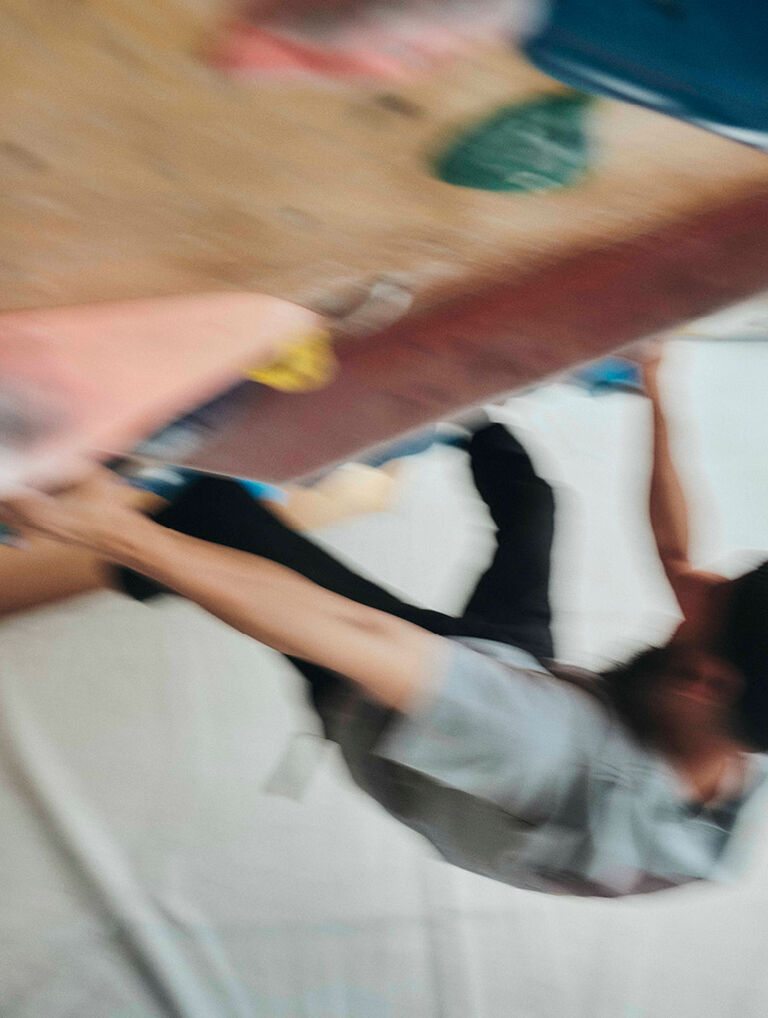

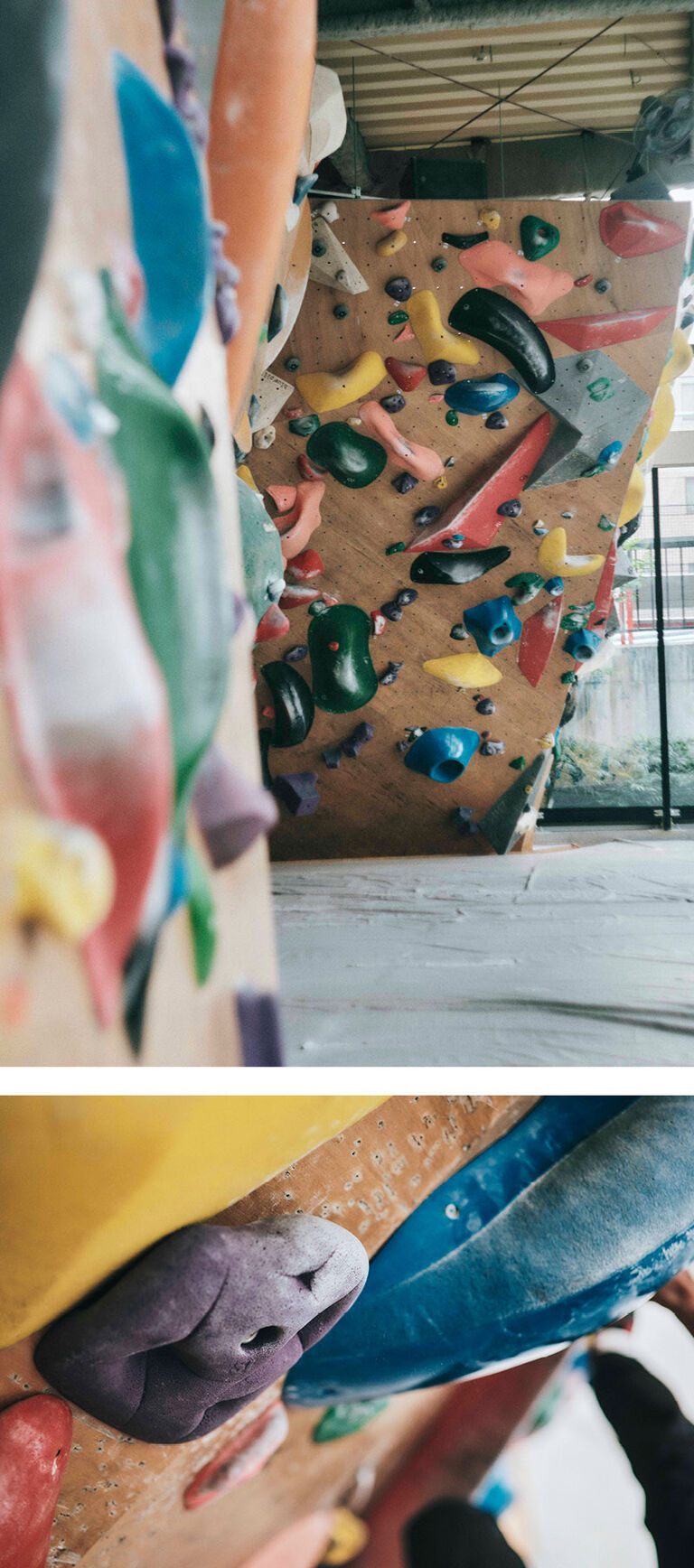
―――Please tell us about the concept of TSS TOKYO, which was produced by JAZZY SPORT.
We aimed to create a facility that would be positive for the future of local children. Babies crawl at first, and then try to climb more and more by holding on to their feet, right? It's like a human instinct, and I think climbing is an extension of that.
That's why there's a sandbox here. First, he crawls and climbs the children's wall, and when he sees an adult climbing next to him, he longs for it. And I think it would be great if there were children who would become stronger and stronger and challenge the world.
―――Do you have any preferences for bouldering walls?
In a normal gym, you put tape on the assignment and specify the grade. But that's not what we're going to do here. This is because we do not want to prescribe the grade from here, but rather to enjoy genuinely facing the challenges that each person wants to climb.
―――In addition to bouldering, you also have a bicycle for striders and adults in the same facility!
There is also a café. We hope to become a community space that connects children's futures with the adults who support them.
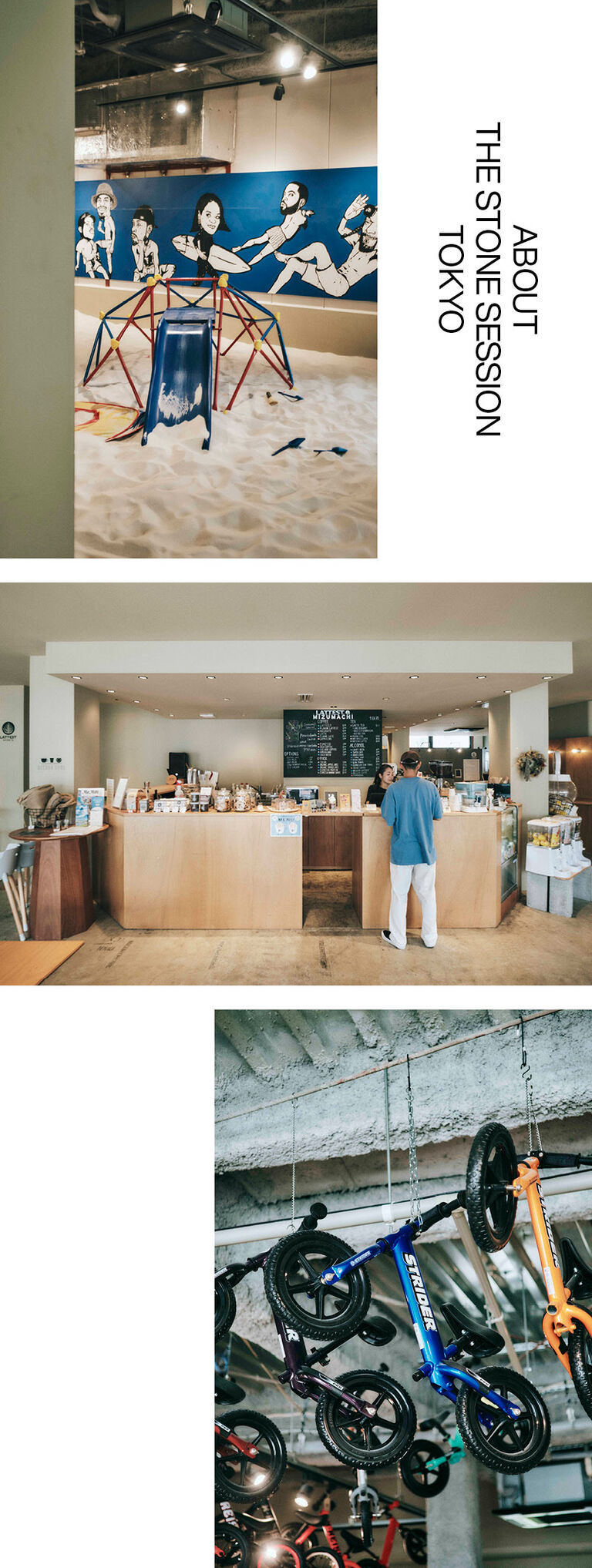
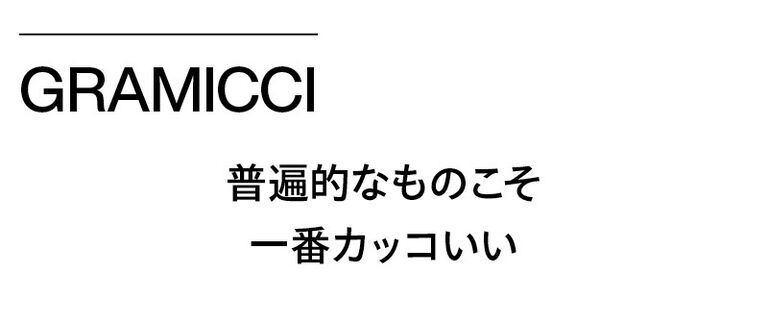
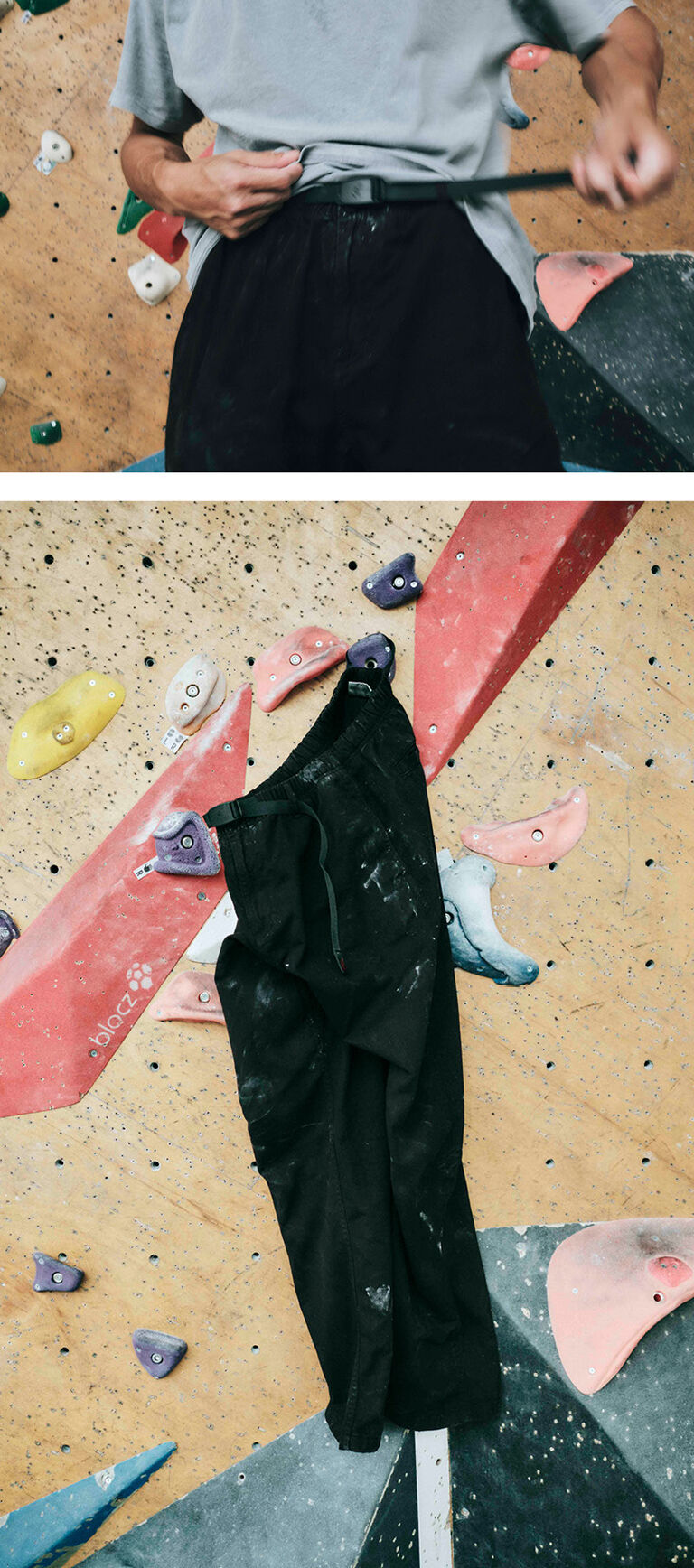
―――When did you meet Gramicci?
The encounter was in the 90s. Of course, I knew that the brand was born from climbing, and I wore it a lot. Like our own music, we aim for something that is fresh and funky even if you listen to it in 30, 50, or 100 years, and that's the coolest thing. Gramicci pants are just that.
Even if you leave it alone, it will continue to be cool as usual. Nowadays, I think it's perfectly fine to have a reverse flow of going from fashion to Gramicci, discovering that the background is climbing, and then becoming interested in climbing.
―――Do you use it not only for climbing, but also for your daily life?
Since moving to Nagano, I've spent much more time wearing boots than wearing sneakers. That's why I make full use of it as workwear. The fabric of the cotton canvas is also solid, and yes, it's the best.

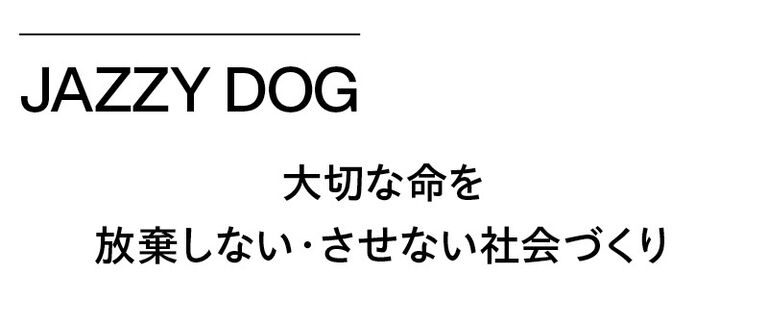

―――Please tell us what made you move to Nagano.
It is for dog protection activities. When our original dog passed away, our children wanted to have a dog again. So, we visited "KANAGAWA DOG PROTECTION (KDP)" which is engaged in dog protection activities in Hayama and became foster parents of a hunting dog. Hounds are quite difficult to handle, and my wife later became a certified dog trainer.
Gradually I began to understand the current situation of rescue dogs. I simply wanted to save more dogs but in the Kanto region I found it difficult to exercise the dogs satisfactorily. Furthermore, the fences of Japan's dog runs are low so a hunting dog can easily jump over them. Additionally, it is risky to release a rescue dog whose past experiences are unknown into an open dog run where an unspecified number of dogs come to play. I realized that many people might be troubled by such issues, so I decided to build a high-fenced dog run called "JAZZY DOG" in the mountains in the countryside.
―――So, Nagano was the place you chose?
"JAZZY DOG" is located in Nagawa Town, Nagano Prefecture. The altitude here is about 1,000 meters, and the summer is cool, sunny, with a small amount of snowfall. Additionally, there are few people and plenty of land, creating an environment where dogs can spend time comfortably without stress. Along with the dog run, we are conducting on-site training for humans to understand "dog habits" and for dogs to understand "human society." A shelter for rescue dogs is currently under construction.
―――By the way, there was a "JAZZY DOG" T-shirt here at TSS.
It is sold as a charity T-shirt. Conservation activities tend to have a negative image, but JAZZY DOG hopes to change the image as much as possible by communicating positively. I don't want to say, "Please donate somehow!" We want to make goods that we think are good, sell them, and use the proceeds for our activities.
―――It would be nice if you could deepen your understanding of rescue dogs.
Yes. What I want to do in the first place is to raise awareness. Of course, I want to save as many animals as possible but just saving them doesn't end there. I want to change the pattern of unhappiness for both people and dogs. Therefore, although it will take time, I would like to appeal to a change in consciousness.
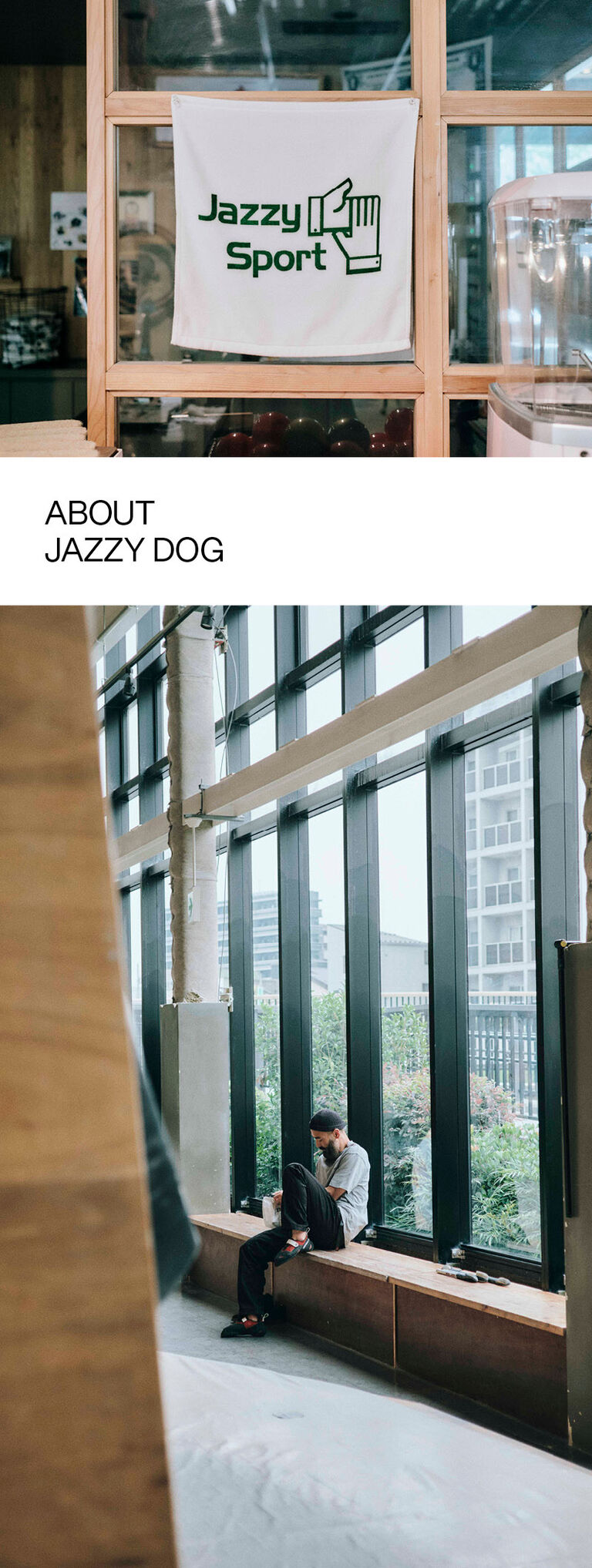
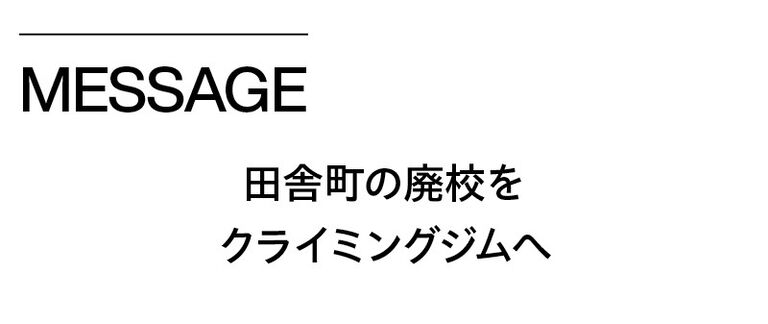
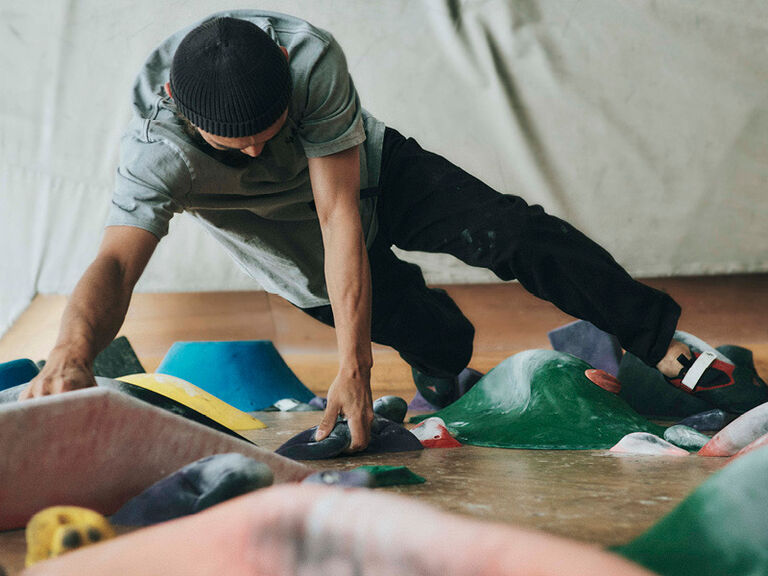
―――Lastly, please tell us what you want to convey through climbing.
In fact, plans are underway to build a climbing gym in Nagawa Town, where I have moved. There was a project of the tourism association to "liven up the town through sports," and the person there sniffed out that I was running a climbing gym and consulted with me. There is an insanely tasteful and cool abandoned school called Wada Junior High School in Nagawa Town, and we are building a climbing gym produced by Jazzy Sport there with the aim of opening on October 8th. I think it would be great to have not only a climbing gym but also a skate ramp and a 3x3 basketball court. I came to this town to do activities for rescue dogs, and I hope to share the groove that comes from the sessions in this place through climbing.
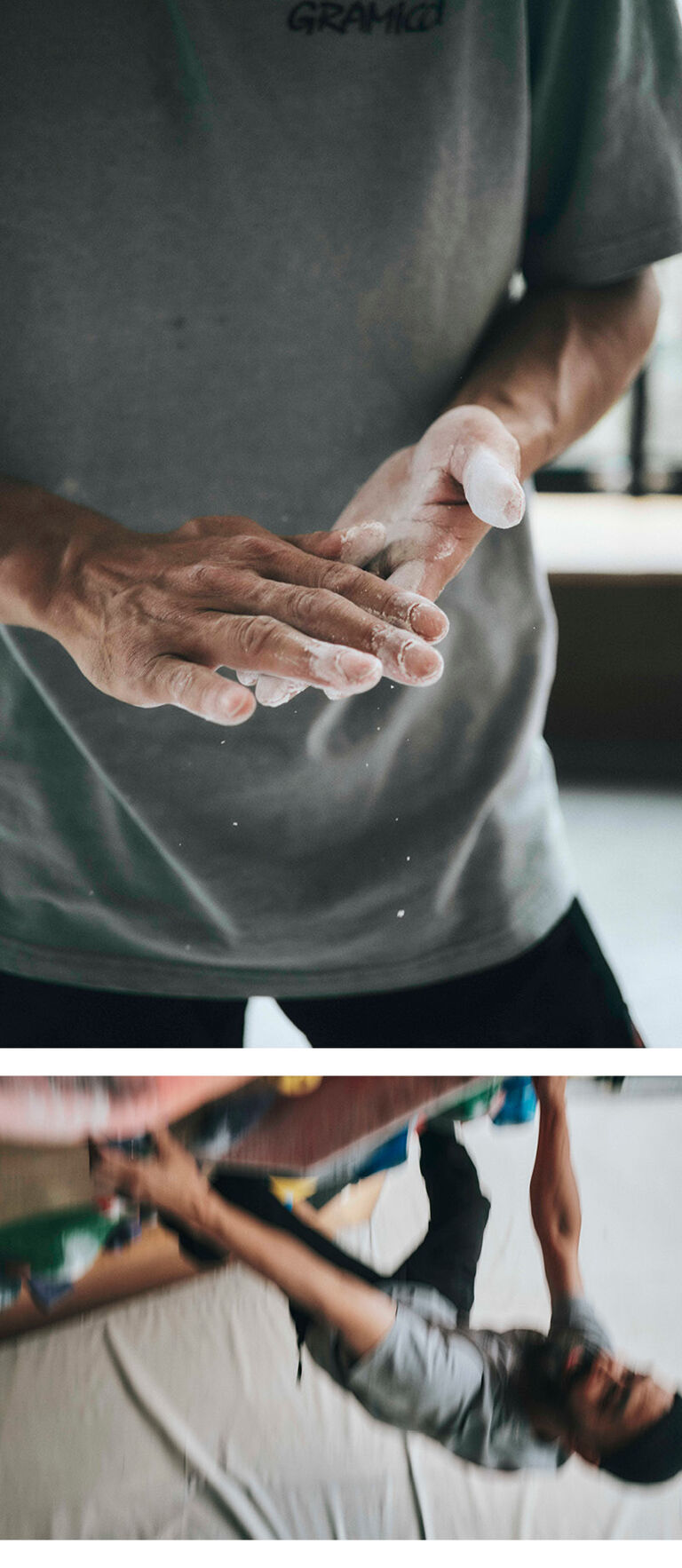
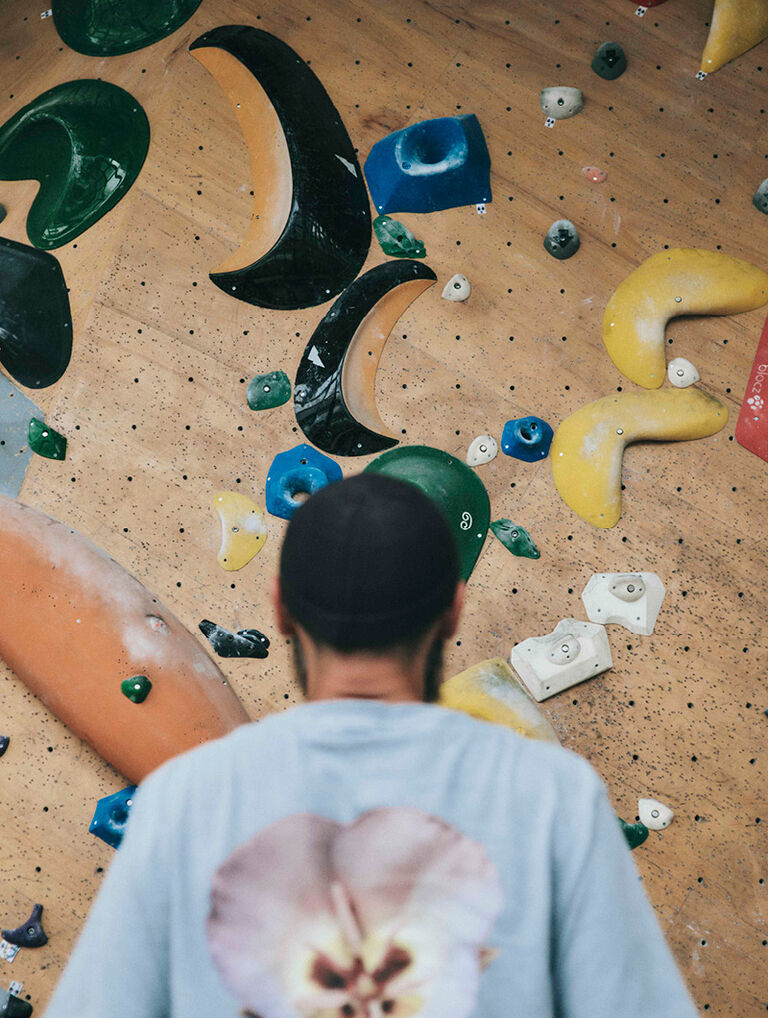
Photo: Kanta Nakamura(NewColor inc)
